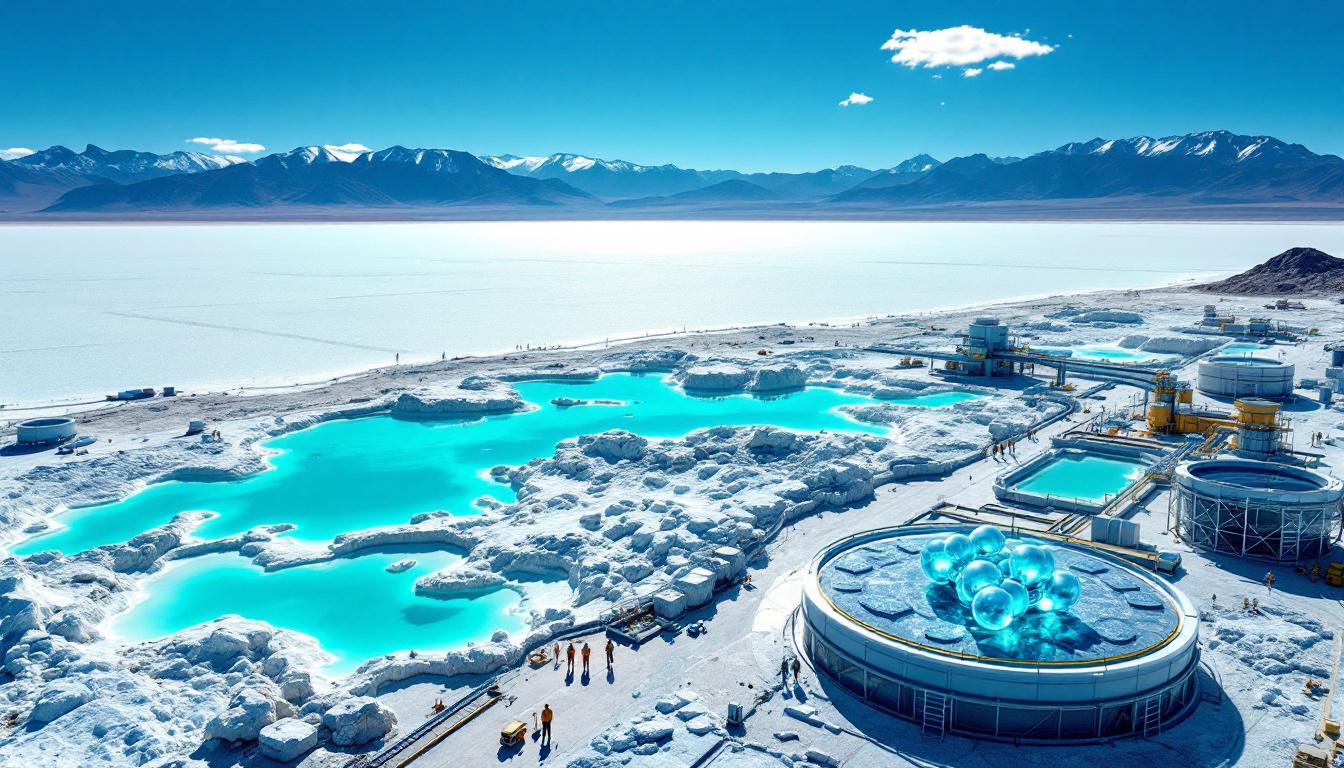What Is Happening with the DRC Cobalt Export Suspension?
The global market has been rocked by the DRC suspension of cobalt exports in 2025. The Democratic Republic of Congo (DRC) shocked metal markets with a four‐month cobalt export halt in February 2025. This bold move comes as resource nationalism intensifies and nations seek a fair share of value from critical minerals for the green energy transition. It also highlights the DRC suspension of cobalt exports in 2025 in an increasingly volatile market.
Production continues within the DRC despite the ban, creating vast stockpiles that may exceed 25,000 tonnes by June 2025. Consequently, this tactic gives the country leverage in negotiations with major buyers. Furthermore, producers like Glencore and Eurasian Resources Group now face uncertainties in an evolving global market.
Analysts have started to draw comparisons to previous pivotal moves in metal markets. For instance, a detailed analysis of policies such as the US Cobalt Tariffs and Their Global Competitive Impact indicates evolving strategies in resource control. Moreover, this action marks an important chapter in the DRC suspension of cobalt exports in 2025, echoed by shifts in global mineral governance.
Why Are the DRC and Indonesia Collaborating on Cobalt Exports?
The partnership between the DRC and Indonesia represents a notable evolution in global mineral strategies. Together, these nations control over 85% of the world’s cobalt production. Consequently, they form a powerful bloc resembling an “opec for cobalt.” Moreover, this cooperation reflects a move towards resource self-determination, mirroring trends seen in other sectors.
Indonesia’s cobalt production increased by nearly 15% in 2024. In addition, the nation's alignment with the DRC suggests a coordinated effort to shape export policies. Similarly, industry commentary on Navigating the Critical Minerals Race Amid Resource Nationalism underscores how countries are reassessing control over valuable resources. This collaboration reinforces the theme of the DRC suspension of cobalt exports in 2025.
Analysts compare this strategy to the coordinated cuts in global oil production seen among OPEC+ members. Furthermore, the approach is designed to counterbalance the influence of dominant consuming nations. However, the alliance also faces complications due to China’s extensive Belt and Road investments in both regions, adding complexity to the joint export strategy.
How Has the DRC Already Implemented Export Restrictions?
The DRC’s swift policy intervention has significantly redefined export practices. Prime Minister Judith Suminwa Tuluka announced production quotas as part of broader reforms. In addition, the country introduced a comprehensive export suspension in February 2025. This act has solidified the DRC suspension of cobalt exports in 2025 as a turning point for the mining sector.
Several rigorous measures ensure compliance:
• Daily production monitoring via digitised reporting systems.
• Multiple government agencies verifying export figures.
• Severe penalties including license suspensions.
• Coordination with customs to prevent smuggling.
These measures contrast sharply with previous, less-enforced bans on African mineral exports. Furthermore, according to industry experts, these restrictions provide ample leverage. Notably, companies will be prioritised if they invest in downstream processing in the DRC, a stance that may drive future domestic investments.
What Impact Has the Export Ban Had on Cobalt Prices?
Cobalt prices surged immediately following the DRC suspension of cobalt exports in 2025. Since February 2025, prices increased by 84%, outpacing even the most optimistic predictions. This price spike follows a global market valued at nearly $26.96 billion in 2024, intensifying tensions in the battery supply chains.
Market analysts point out that the price acceleration outstrips historical trends, such as the 190% spike witnessed in 2017–2018. In addition, lithium prices only experienced modest gains of approximately 12% during the same period. Consequently, this disparity has raised concerns among battery manufacturers and global investors alike.
Prominent research firms now project cobalt prices reaching $40 per pound by Q3 2025. Meanwhile, the global cobalt market update further supports these projections with detailed analysis on market sentiment. This scenario reinforces the significance of the DRC suspension of cobalt exports in 2025 for global pricing dynamics.
How Will This Affect China's Cobalt Supply Chain?
China’s cobalt supply chain is particularly exposed to recent export restrictions. In the last four months of 2024, the DRC exported nearly 68,000 tonnes of cobalt hydroxide to China. Consequently, a sustained halt on these exports will deplete Chinese cobalt inventories rapidly.
Industry analysts assert that Chinese refiners will experience significant disruptions. For instance, while firms like GEM Co. are stockpiling reserves, these measures will only suffice for 4–6 months under normal operating conditions. Furthermore, the reliance on optimised DRC-sourced cobalt hydroxide complicates any swift switch to alternative materials.
Moreover, Indonesia’s growing role in supplying cobalt intermediates to China offers only partial relief. In addition, the technical challenges of processing alternative feedstocks remain formidable. As discussions continue, the evolving dynamics further underline the critical importance of the DRC suspension of cobalt exports in 2025.
What Are the Implications for the Electric Vehicle Industry?
The rising cobalt prices and supply constraints pose serious challenges for the electric vehicle (EV) industry. EVs account for roughly 60% of global cobalt consumption, making supply disruptions particularly disruptive. In addition, the technical demands of lithium-nickel-manganese-cobalt-oxide batteries heighten the risks tied to cobalt shortages.
Several strategies are emerging in response:
• Accelerating the transition to lithium-iron-phosphate batteries with no cobalt content.
• Increasing research into solid-state battery technologies, potentially commercialised by 2030.
• Expanding recycling initiatives to recover cobalt from spent batteries.
• Developing alternative cathode materials from more abundant elements.
Volkswagen, for example, pledged a 50% reduction in cobalt use by 2026. In addition, CATL’s commitment of $500 million to sodium-ion technology reflects broader industry concerns. These strategic shifts underscore the impact of supply uncertainties driven by the DRC suspension of cobalt exports in 2025.
Furthermore, battery analysts warn that a complete transition away from cobalt-containing cathodes might reduce global demand by 30% by 2030. However, such a shift is fraught with technology challenges and manufacturing retooling, maintaining cobalt’s central role in the foreseeable future.
What Could Happen to Global Cobalt Supply and Demand?
The DRC and Indonesia combined control about 85% of global cobalt production. Consequently, shortages are inevitable if restrictions persist. In addition, alternate supplies, such as Australia’s 5% share, cannot fully mitigate supply risks. The four‐month export suspension has already strained market dynamics and could intensify if extended.
Analysts warn that continued restrictions might lead to force majeure declarations from battery component suppliers. In addition, strategic stockpiles held by the European Union and the United States are insufficient in the short term. Recycling programmes might eventually contribute up to 35% of cobalt demand by 2030.
A historical parallel is seen in the 2010 rare earth crisis, when export restrictions forced long-term supply chain diversification. Furthermore, as the DRC suspension of cobalt exports in 2025 unfolds, new approaches to resource governance and international cooperation will be essential. Transitioning markets may also need to balance immediate supply challenges with strategic long-term investments in alternative technologies.
FAQ: Common Questions About the DRC Cobalt Export Ban
How long will the DRC export suspension last?
The suspension began in February 2025 for four months. Nevertheless, no formal end date has been announced. Similar policies in the past have extended beyond initial timeframes. Therefore, analysts anticipate that the current measures could extend dependent on negotiations with international buyers.
Will cobalt prices continue to rise?
Many experts predict prices will remain high. With an 84% surge since February 2025, prices may escalate further given persistent supply constraints. Some analysts forecast prices to reach unprecedented levels by Q3 2025. The current market dynamics dramatically illustrate the impact of the DRC suspension of cobalt exports in 2025.
How might battery manufacturers respond to cobalt shortages?
Battery makers are adopting multiple approaches:
• Increasing research into cobalt-free battery alternatives.
• Stockpiling supplies to mitigate short-term supply disruptions.
• Seeking alternative cobalt sources outside the DRC and Indonesia.
• Securing long-term agreements with recycling firms.
These steps indicate an industry-wide effort to counter supply chain vulnerabilities. In addition, manufacturers are carefully weighing the cost implications of a prolonged restrictions period.
What is Indonesia’s role in the global cobalt market?
Indonesia has emerged as the world's second-largest cobalt supplier. The nation’s output, largely a by-product of nickel mining, has grown significantly alongside an expanding export portfolio. In addition, Indonesia’s alignment with the DRC reinforces the coordinated market influence that has contributed to the current DRC suspension of cobalt exports in 2025. This growing cooperation is reshaping economic strategies in the resource sector.
What This Means for the Future of Critical Minerals Supply
The DRC-Indonesia collaboration indicates a new era for resource governance. Meanwhile, initiatives like Addressing Critical Mineral Shortages in the Clean Energy Transition exemplify the strategic adjustments needed for sustainable growth. In addition, the industry is monitoring Mining and Finance Predictions for 2025 to gauge further trends.
Furthermore, Mining’s Crucial Role in the Clean Energy Transition illustrates how policy, technology, and investment are converging. The lessons from the DRC suspension of cobalt exports in 2025 emphasise the need for diversified supply strategies. As countries and companies adapt, the future of global critical minerals supply will rely on innovation, strategic reserves, and international collaboration.
The evolving market also underscores the urgency of developing recycling infrastructures and alternative technologies. In addition, partnerships among producing and consuming nations are key. The emphasis on value addition rather than raw material exports promises a more balanced approach in the long term.
In summary, the cascading effects of the DRC suspension of cobalt exports in 2025 reveal the intricate ties between resource nationalism, global pricing, and supply chain management. As nations recalibrate their strategies, stakeholders must prepare for significant market adjustments.
Wondering how to stay ahead of critical mineral market disruptions?
Discover real-time alerts on significant mineral discoveries and market-moving events like the DRC cobalt export suspension with Discovery Alert's proprietary Discovery IQ model, turning complex market data into actionable insights for investors. Explore how major mineral discoveries can lead to exceptional returns by visiting the Discovery Alert discoveries page and position yourself ahead of market volatility.




